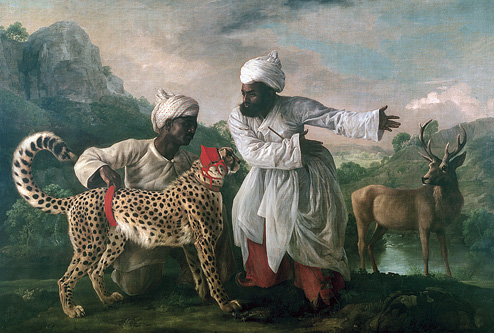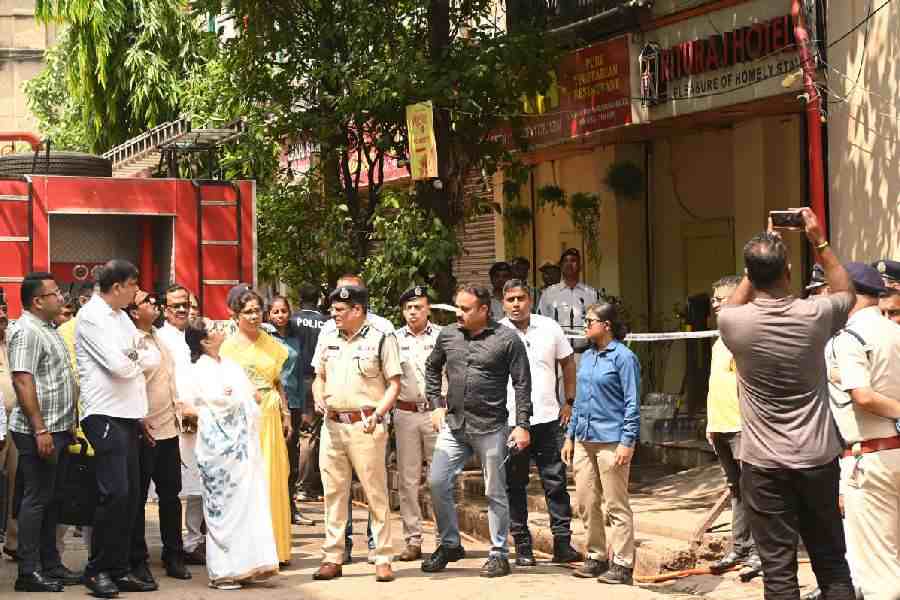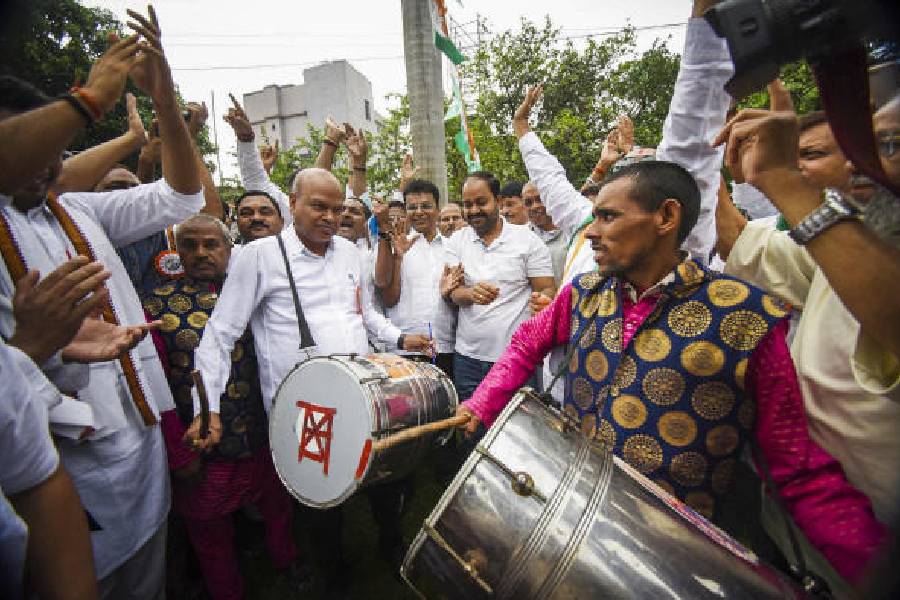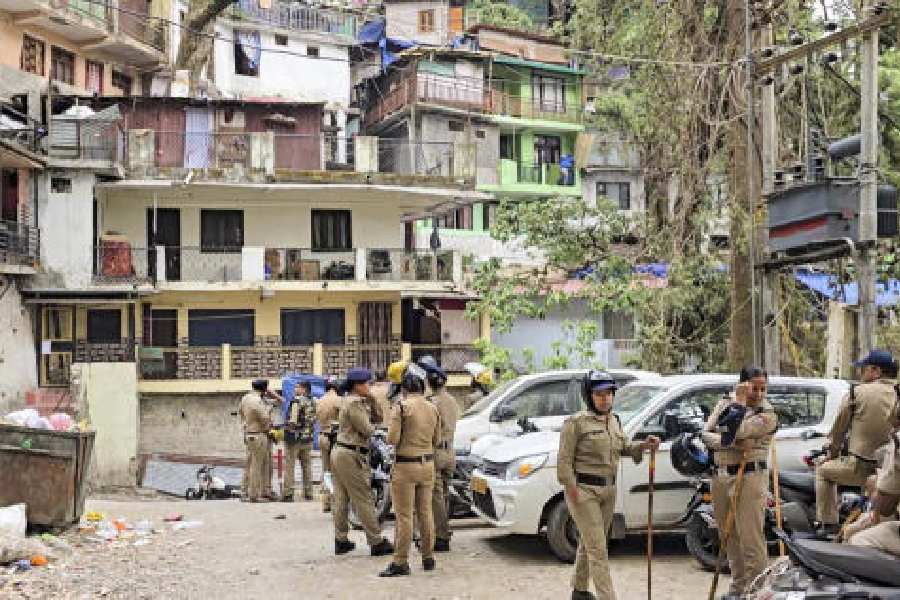
It’s an exhibition that tells the complex story of how the English came to India initially as traders but overstayed their welcome by becoming rulers — at times benign but often harsh. Artist and Empire at Tate Britain, one of Britain’s biggest art museums, is the visual rendering of 200 years when the British ruled India and the world.
On display are paintings by some of the greatest British artists of their day of landmark events over the past 400 years from Africa, Australia, the Americas and the Caribbean. But the maximum number and certainly the best of the giant canvases are from India.
“These paintings are a window into the past and we should make the effort to follow them,” says David Blayney Brown, one of the show’s curators.

The exhibition (which runs until 10 April 2016) begins with a room which explains why mapping, charting and surveying were “essential tools of empire”. This is followed by a room called “Trophies of Empire”, which includes a famous painting by George Stubbs, A Cheetah and a Stag with Two Indian Attendants (1765). This creature rather embarrassed India — encouraged to join a stag hunt, the poor thing ran away and hid. Recaptured by one of its Indian handlers, it lived on as a pet with the insulting name, “Miss Jenny”.
The works in the next room move to what’s called “Imperial Heroics” — “with some intended irony”, says Blayney Brown.
Just as it’s the job of today’s embedded reporters, photographers and TV crew to be patriotic in time of war, it was the task of the artists of yesteryear to reassure public opinion back in Blighty by showing British warriors and imperialists as being heroic in battle, magnanimous in victory, and martyrs when vanquished by impossible odds.
“Not always,” interjects Blayney Brown, who gives the example of The Remnants of an Army (1879) by Lady Elizabeth Butler. Her painting depicted the tragic consequences of the First Afghan War when only one survivor,
Dr William Brydon, made it back to Jalalabad. Lady Butler and her husband, a senior figure in the army, “were both against empire — they were against military interventions in other countries and specifically opposed the Afghan Wars”, he points out.

However, another painting in “Imperial Heroics” — Retribution (1858), by Edward Armitage — shows Britannia taking revenge for the massacre of British women and children in “the Bibighar in Cawnpore” (the splendid catalogue devotes a whole page to this work).
British rulers are shown as kind conquerors even when princes are being taken hostage in The Reception of the Mysorean Princes by Marquis Cornwallis, 26 February 1792 (c. 1793), by Robert Home. The painting depicts an event that took place after a successful siege of Tipu Sultan’s Seringapatnam Fort. Tipu was forced to sue for peace and the British demanded that he send his two sons as hostages to ensure that he stuck to the terms of the peace treaty.
Other noteworthy paintings in the room include Robert Clive and Mir Jafar after the Battle of Plassey (1757), by Francis Hayman; and Charles Warre Malet, Concluding a Treaty in 1790 in Durbar with the Peshwa of the Maratha Empire (1805), by Thomas Daniell.
The next room, “Power Dressing”, is of Captain Colin Mackenzie (1842), by James Sant. The painting shows Mackenzie, who was a political officer when the British occupied Kabul, dressed in a majestic Afghan dress.

The room after that is called “Face to Face”, which contains Johan Zoffany’s Colonel Mordaunt’s Cock Match (1784-8). This celebrated painting makes it clear that “there are really friendly relations and the two sides are mixing on effectively friendly terms”, says Blayney Brown.
The exhibition ends with two sections — “Out of Empire” and “Legacies of Empire” — which argue that artists such as Abindranath Tagore and Jamini Roy in India and Balraj Khanna and the Singh Twins, Amrit and Rabindra, in the UK, somehow represent resistance to the idea of empire.
Indians who cannot come to London to see the exhibition have a chance of catching it in Singapore.
Many colonial artists were great names of their day. George Stubbs was a household name, famous for his paintings of animals, especially horses. Johan Zoffany went on to do portraits of the rich and powerful, including royals.
Nevertheless, according to Blayney Brown, there has been a nervousness in recent decades about displaying any art as “colonial art” irrespective of its quality — until now.

Exquisite paintings of flora and fauna in India, for example, now tend to be shown as part of natural history, removed from any empire “contexts”, he says.
“That has manifested itself in a cultural amnesia as well which is one reason why we thought it would be
interesting to do this show,” he says.
Blayney Brown acknowledges that the word “empire” has become negative in today’s Britain where society takes care not to offend the ethnic minorities. “The empire was nevertheless a reality, it was a historical phenomenon. I am passionately against applying modern standards to historical art,” he states.
Even before the rebellion of 1857, Blayney Brown says, “those 18th century Indophiles, who had studied languages, collected Indian miniatures, studied Indian architecture, were thought to have become rather decadent and gone
almost native from a British perspective. There is a change in the relationship and it took on a harsher dimension. There was less mixing and less friendship.”
Coming to the present, he observes: “When (David) Cameron goes to India now for a piece of the action of a growing economy, it comes across to me from a historical perspective as rather ironic. He refers back to a long standing relationship. I am not sure he necessarily reflects or wants to reflect all the aspects of that historical relationship. He very much wants to focus on the commercial aspect.”
He remarks candidly: “The one thing I would say about the British empire was that it was incredibly damaging to indigenous Indian commerce because it sucked all the life out of it and extracted all the wealth to Britain.”
He agrees that very few of the works in Artist and Empire “would stand up to contemporary judgements for all sorts of reasons — be that judgements about race, gender, hierarchy, class. They are not works that are in line with contemporary thinking but they are insights into history.”










